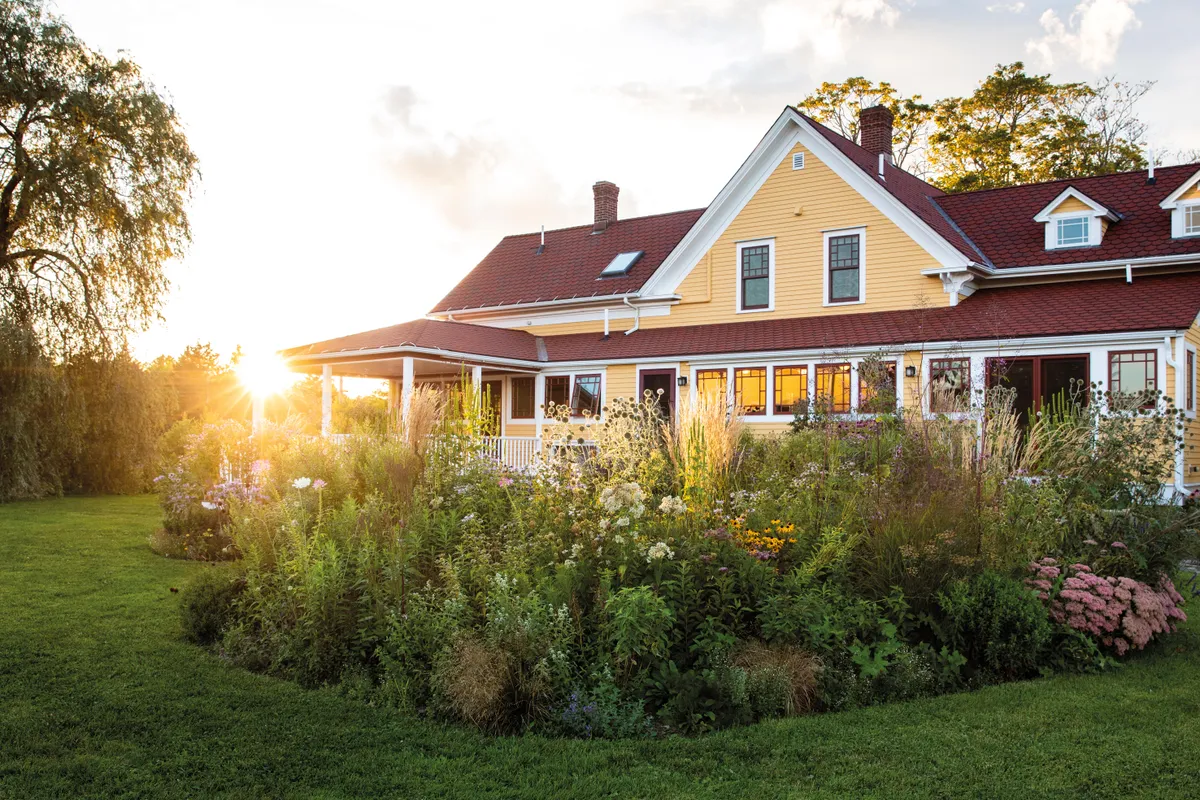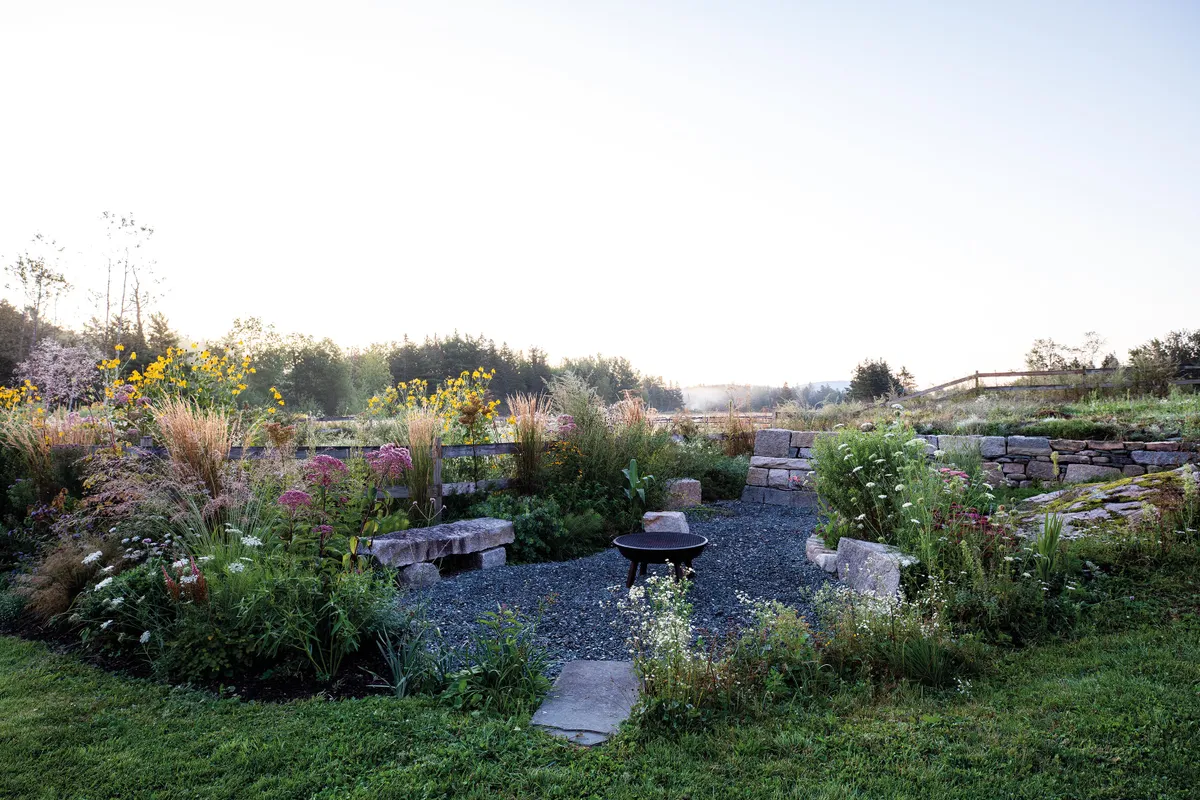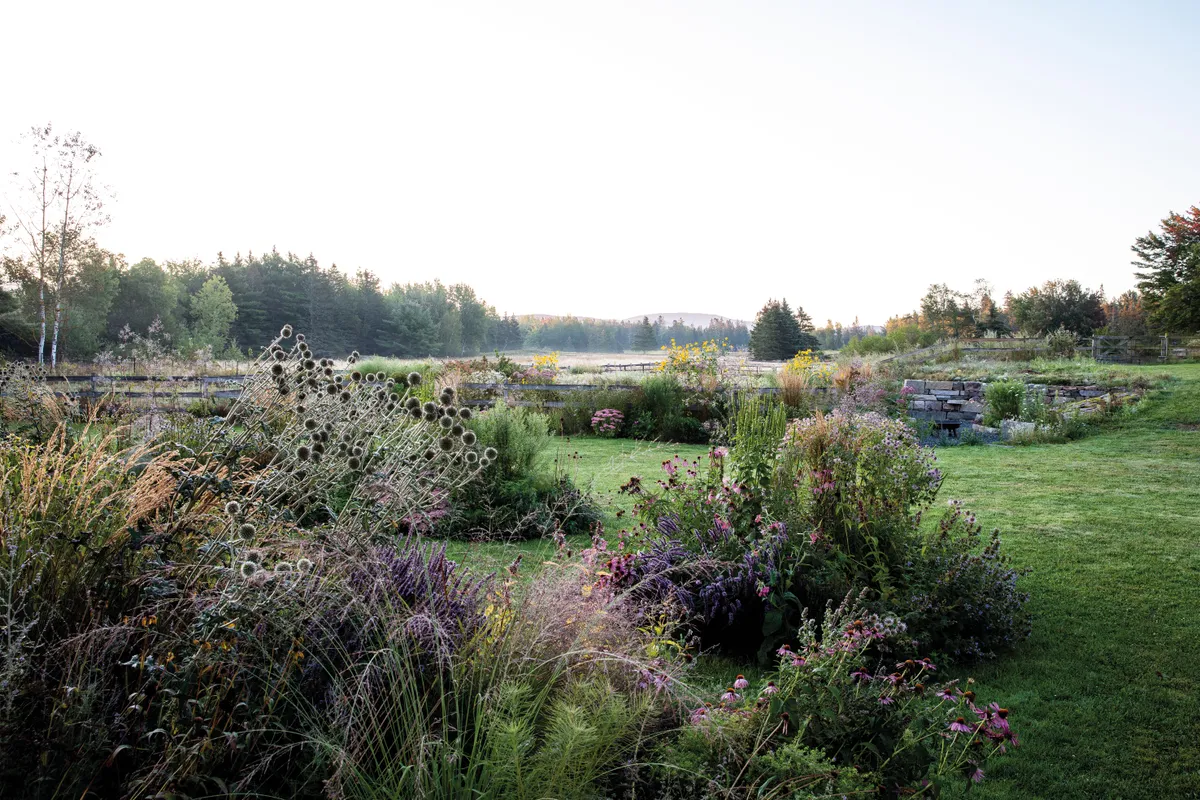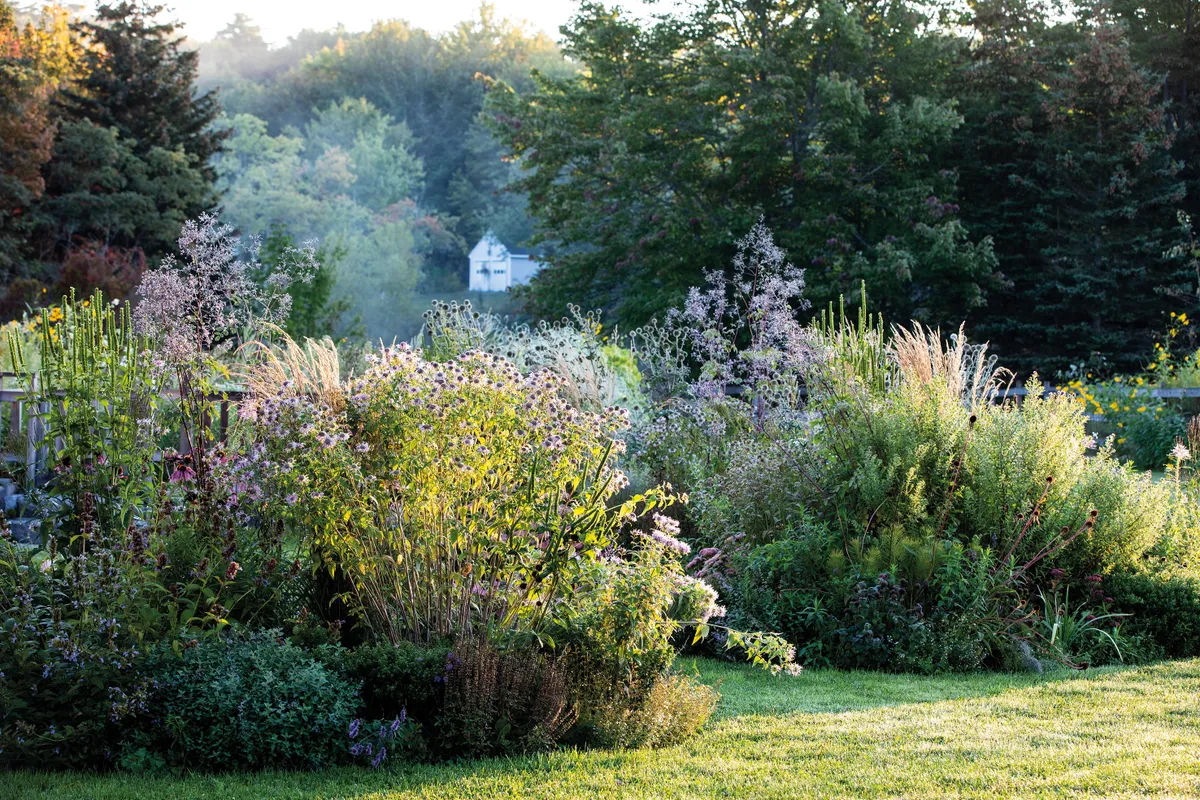Whatever you call the dominant European planting style of the past 20 years – New Perennial, prairie or low-input, high-impact – there is no getting away from the fact that many of the key plants in this approach are American. In high summer, a northern-hemisphere bed may well feature a mix of grasses and hard workers, such as rudbeckia and sanguisorba, and with good reason. But to an American observer there is almost always something vital missing from this kind of landscape: big rocks. In New England, there are boulders galore, and low walls of smooth, irregular fieldstone criss-crossing the countryside, giving a tangible sense of a region steeped, waist high, in its agrarian past. With American wildflowers self-seeding along white picket fences, hopes of finding adventurous native planting are too often dashed. It is encouraging therefore to find a landscape gardener such as Caleb Davis, whose considered approach to plants and stones is inseparable from the demands of his very particular locality.
Mount Desert Island is reached by a bridge from the coast of Maine, with more than half of its 108 square miles given over to National parkland. Other areas are carved into private estates, originally claimed in the 19th century by the nation’s most wealthy, having taken the hint from more artistic rusticators who painted and wrote about the northern wilderness. Here’s the rub: summers are short in Maine. Just as the island is stirred into three months of frantic tourism, so its plants must seize the day and live life to the full while they can. American perennials may seem to take a while to get going in a European summer but they are perfectly calibrated for a place where spring can take place in one week.
There is a coarseness to the planting that reflects the character of the broader landscape of the region.
At this family farmhouse, Caleb’s clients live here all year round, which naturally affects the property’s appearance. The half-acre lawn at the back was reconfigured and planted in 2018, while the whole garden has developed over 12 years. “There has been an appreciation of a slow pace with a lot of patience in the whole process,” says Caleb. “There are so many benefits that come from a slower approach.” This leisurely attitude would be less likely if the family skipped the freezing winters, when Maine is blanketed in snow for at least a third of the year. Read more about the garden below.
The garden brief
What Farmhouse garden, close to the Atlantic Ocean and backing on to Acadia National Park. Where Bar Harbor, Maine. Size Half an acre, Soil Heavy clay with free-draining loam added to some beds. Climate Coastal, with very hot and dry summers. Other seasons are wet, with long periods of deep frost and heavy snow in winter. Hardiness zone USDA 5b.

In this coastal garden, landscape designer Caleb Davis has broken up a large lawn with a series of perennial beds, using a planting palette that ties in with the colour of the house.

In the foreground, tall seedheads of Thalictrum rochebruneanum ‘Lavender Mist’ interact with the shapes of distant trees, while cushions of warm-pink Hylotelephium ‘Herbstfreude’ bring the planting back down to earth. This area has an easy relationship with the nearby fields.

Crushed local stone covers the firepit area, and the retaining wall behind is made from a mix of stone and granite found on the property. “I use minimal stone and wood elements to create a framework,” says Caleb. “They are a reference point in which people can relax and not be overwhelmed by the chaos.”

“I’m drawn to the blues and purples,” says Caleb. “Plants in that spectrum work well here.” In this area, looking out to the Acadia National Park, a mix of Agastache ‘Blue Fortune’ and Amsonia hubrichtii run across several beds, while Echinops ritro and Molinia caerulea subsp. arundinacea ‘Skyracer’ add height. Shots of yellow come from Rudbeckia laciniata.

Light shines through the planting in this open, south-facing garden, illuminating foliage as well as the jewel-like flower colours of Echinacea purpurea and Monarda fistulosa. Green candelabras of budding Agastache nepetoides are a strong feature, with Agastache ‘Blue Fortune’.

Granite slabs, dry stacked to make a staircase in the recess of a weathered ledge, are surrounded by Hylotelephium ‘Herbstfreude’, Rudbeckia laciniata (competitive enough to be planted out into the surrounding fields), Rudbeckia fulgida ‘Little Goldstar’ and the switch grass Panicum virgatum ‘Shenandoah’.

The pinkish-purple flowers of Thalictrum rochebrunianum ‘Lavender Mist’ partially veil the view, with Monarda fistulosa and Calamagrostis x acutiflora ‘Karl Foerster’ catching the light. Caleb’s clients wanted to work with the historical aspect of the farm in a low-input way.
